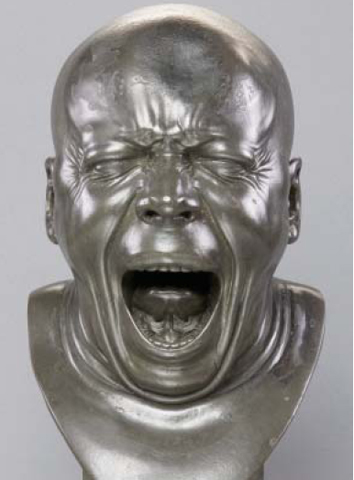Neue Galerie
1048 Fifth Ave. at 86th St.
Through Monday, January 10, $15
212-628-6200
www.neuegalerie.org
After the death of his leading advocate, Martin van Meytens, and failing to receive a desired position at the Academy of Fine Art in Vienna, Bavarian-born Austrian Franz Xaver Messerschmidt went a bit off the deep end. He returned to his home in the small village of Wiesensteig and devoted the bulk of his remaining years (1771-83) to creating “character heads,” busts based on faces he made in the mirror by pinching himself (although he did continue receiving commissions during this time as well). Many of the heads are on display at the Neue Galerie through Monday, January 10, the first one-man museum show of Messerschmidt’s work ever to be held in the United States and one that next goes to the Louvre in Paris. The exhibit begins with several of Messerschmidt’s early commissioned busts of prominent Viennese figures, Baroque pieces that show off his immense skill at carving out facial characteristics with exacting detail, from the eyes, nose, and mouth to the cheekbones, chin, and hair. But his presumed madness, heightened by a fear of evil spirits around him, soon becomes evident in the second room, which contains a glass case of seven of the character heads, depicted in odd, unusual grimaces, winces, yawns, and other comic and serious poses, every wrinkle, neck muscle, eyebrow, and double chin a glimmer of perfection. Forget about the names of the sculptures — such intentionally silly, banal titles as “Surly Old Soldier,” “Afflicted with Constipation,” and “Just Rescued from Drowning” were assigned by a promoter after Messerschmidt’s death in 1783 (at the age of forty-seven) — and just bask in the glory of the work itself, from the intense beard on “Capuchin” to the rare depiction of teeth and a tongue in “The Yawner” to the beautiful hat of “The Artist as He Imagined Himself Laughing,” all of which predates (and perhaps predicts) German Expressionism but feels as modern as if it were created yesterday. There is also a thirty-minute documentary on Messerschmidt, and classical music fills the third-floor galleries. Also on view at the Neue is the excellent “Postcards of the Wiener Werkstätte: Selections from the Leonard A. Lauder Collection” (through January 17) in addition to the outstanding permanent collection, including exquisite paintings by Gustav Klimt and Egon Schiele as well as drawings by Klimt, Schiele, Kokoschka, Lubin, and others.
